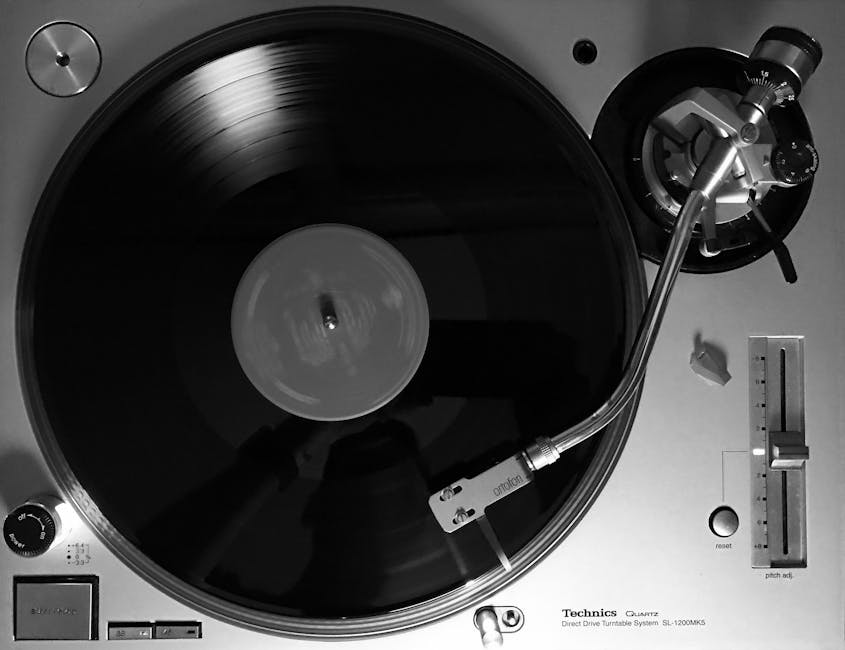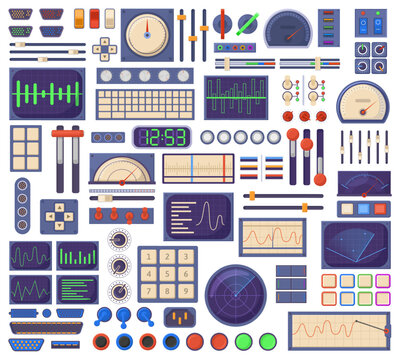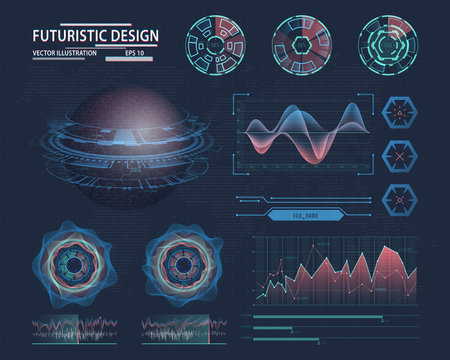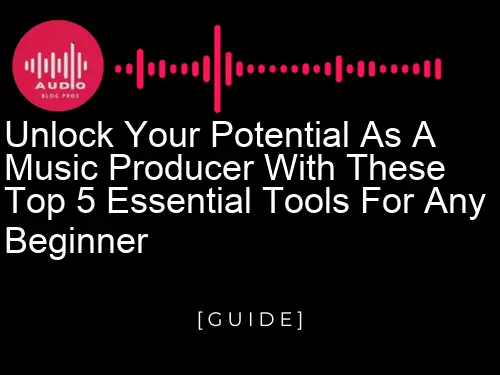Are you a beginner music producer looking to unlock your full potential? Are you overwhelmed with the vast array of tools available and unsure which ones to focus on? Look no further! In this blog post, we’ll explore the top 5 essential tools for any beginner music producer. Get ready to discover how you can reach your highest ambitions in music production.
Table of Contents
Get Started with the Right Software
To produce great music, you’ll need the right tools. Fortunately, there are plenty of software and hardware options available to help you get started.
If you’re new to music production, it’s important to start with a software program that offers easy access to basic recording and mixing features. You can find many free and affordable options available online.
When it comes to recording equipment, it’s important to invest in quality gear that will give you the best sound possible. You can find high-quality microphones, audio interfaces, and recording software at a variety of prices.
It’s also important to learn the basics of mixing and mastering. These skills will help you create cohesive tracks that sound great on all types of speakers.
Finally, it’s essential to use sound design techniques to add depth and dimension to your music. This includes using effects processors, looping, and sampling.
By using these essential tools and strategies, you can start producing great music today!

Invest in Quality Recording Equipment
When producing your own music, the quality of your recordings and equipment are key ingredients. Make sure to invest in high-quality recording equipment like mics, audio interfaces, and recording software, as well as good mixing and mastering skills. Use these tips to help produce great sounding tracks:
Get started with the right software
One of the most important tools you need for music production is good recording software. This can include both software designed for beginners, like GarageBand or Cubase AI Suite, or more advanced programs like Pro Tools or Ableton Live. When buying a program, make sure it has features that will help you create professional-sounding tracks such as flexible track templates, automatic rendering of audio files into MP3s on export, and/or offline editing capabilities so you can work on your songs anywhere without worry about internet connection speeds affecting playback.
*Invest in good audio gear*
Good audio gear not only helps improve the quality of your recordings but also provides flexibility when arranging sounds together in instrumental and vocal tracks. Equip yourself with microphones that capture clear sound across all frequencies (including those lower than usual for vocals), externalaudio interfaces that handle large amounts of data quickly, powerful speakers or headphones to get terrific sound quality from small device speakers, and enough storage space to store hours worth of recordings.
Learn basic mixing techniques
Even if you don’t plan on producing electronic dance music (EDM), understanding basic mixing techniques will give you an edge when arranging sounds together in a cohesive way. Mixing refers to how signals are combined together to create a finished product – think of it as the “masterpiece” layer in DIY music production projects! Assembling multichannel recordings (such as instrumentals with multiple voices), balancing levels between instruments so they’re neither too loud nor too soft, adding effects at specific points during a song – these are all common tasks DJs must master if they want their sets to sound cohesive and professional-level polished.
. Mastering is key!
Once you’ve completed your mixdown process including EQing , compression , panning , phase shift etc., it’s time to tackle one last task: mastering . Mastering is essentially taking all the final touches off your mix so it sounds perfect play-out through any listening system – from PA systems outfitted with dedicated mastering control rooms to home stereos! The best way to learn about mastering requirements for different genres is by reading professional reviews and/or listening to tracks mastered by experts in that particular genre.
*Utilize sound design techniques*
Not all tracks need to be mixed and mastered to sound great – some may just need a little extra TLC to bring out the best in them. One way to do this is to add effects like reverb, delay, and distortion at specific points in a song to create a more dynamic or atmospheric sound. You can also use sound design techniques like sampling and looping to create unique sounds that wouldn’t be possible with traditional recording methods.
*Understand music theory*
While not necessary for producing great sounding tracks, understanding basic music theory can help you improve your production skills and understanding of how sounds work together. This includes knowledge of scales (such as the major and minor scales), chords, intervals, and harmonic concepts like triads and seventh chords. Once you have a basic understanding of these concepts, you can start applying them to your own music compositions.
*Harness the power of MIDI*
Not all music production tasks require hands-on mixing and mastering – sometimes all you need is some flexibility in terms of controlling sounds with MIDI controllers and software synthesizers. By understanding how MIDI works, you can create intricate arrangements and rhythms that would be difficult or impossible to achieve otherwise.
*Take advantage of creative effects processing*
While not necessary for producing great sounding tracks, adding creative effects processing like reverb, delay, chorus, flanger, etc., can give your music a more polished or professional sound. By understanding how these effects work, you can create tracks that are both unique and expressive.
*Employ creative arrangement strategies*
Sometimes all you need is a little creativity in order to produce great sounding tracks – no mixing or mastering required! One way to achieve this is by employing creative arrangement strategies like layering sounds together or using time-based effects like looping or sampling to create sonic textures.
*Utilize creative expression techniques*
If you’re feeling creatively inclined, there are many ways you can express yourself through your music production skills without needing to learn any mixing or mastering techniques. One way is to experiment with different sounds and sonic textures using editing tools like audio editors or samplers.

Learn the Basics of Mixing and Mastering
You’ll need to learn the basics of mixing and mastering if you want your music to sound its best. This includes understanding frequencies, levels, EQing, compression and more. You’ll also need to understand audio terminology in order to properly label tracks and make use of proper timecode for synchronization purposes. When it comes to mastering, you should aim for a loudness level that’s appropriate for the genre of music you’re producing. Too much gain can distort your track while too little may not give it the punch it needs. Overall, good production techniques will result in better sounding music overall!

Utilize Sound Design Techniques to Enhance Your Tracks
There are a number of techniques you can use to enhance the sound of your tracks, such as mixing and mastering. Mixing is the process of combining multiple audio tracks together to create a finished product. Mastering is the final step in the audio production process, where additional processing (such as equalization) is applied to bring your music to its highest possible quality.
You can also use sound design techniques to create unique sounds that add impact and interest to your tracks. For example, you can add reverb or delay effects to make objects or vocals sound bigger or more realistic. You can even use synthesized sounds for added suspense or atmosphere in your music. Music theory also plays an important role in producing high-quality music; understanding how intervals work, for instance, will help you produce cleaner sounding melodies.
Finally, it’s important to remember that production quality doesn’t just rely on technical skill – creativity and arrangement are essential elements too! By using creative arranging strategies, for example, you can create songs with a unique sound that stands out from the competition.
Make Use of Sampling and Looping to Create Unique Sounds
One of the most important aspects of music production is being able to create unique sounds. One way to do this is by utilizing sampling and looping. Sampling allows you to take a short snippet of audio from a source and use it in your music. Looping allows you to repeat a section of audio over and over again.
Another way to create unique sounds is by understanding music theory. This can help you understand how different notes are related to each other and how they can be arranged in order to create a composition. Additionally, understanding music theory can help you create more complex melodies and rhythms.
Another important aspect of music production is having control over your tracks. This means being able to edit and manipulate them in order to achieve the desired soundscape. Various software tools are available that allow you to do this, including Ableton Live, Logic Pro, and Pro Tools.
Finally, one of the most important aspects of music production is being able to express yourself creatively. This means being able to come up with original arrangements and sounds, as well as utilizing creative effects processing to add depth and dimension to your tracks.

Understand Music Theory for Improved Production Quality
In this section, we will discuss music theory and its importance in music production. While not necessary for every producer, understanding music theory can help you create more thoughtful and ambitious tracks. In addition, understanding fundamental scales and chord patterns can help you better structure your songs. Additionally, knowing musical symbols (such as tetrachords and triads) will give you a deeper understanding of sonic concepts. Finally, knowing how to read notation will allow you to create accurate track times and perform music with greater precision.
Harness the Power of MIDI for Flexible Control Over Your Tracks
There are a number of different ways to arrange your music to better suit the listener’s experience. One way is to use arranging techniques called form. Form arrangers create a structure for their compositions that helps listeners follow the story being told. Other arrangements can emphasize specific textures, sounds, or emotions in order to make your music more impactful. Experiment with different arranging techniques and see which ones work best for your songs.
Take Advantage of Automation for Creative Expression
There are a number of creative effects processing techniques you can use to transform your music into something uniquely your own. Consider using distortion, reverb, EQ, and other sound effects to create unique sounds that add pizzazz and depth to your tracks. Additionally, you can use automation to trigger specific sounds or loops in response to specific triggers on the instruments in your music. By understanding how each effect works and combining them in the right ways, you can achieve terrific results that will set your music apart from the rest.

Employ Creative Effects Processing to Transform Your Music
Creative effects processing is one of the most powerful tools available to music producers. Used correctly, it can help you transform a track into something unique and memorable. There are many different effects processors out there, each with its own advantages and disadvantages. It’s important to find one that fits your specific needs and preferences. However, some of the main types of effects processors include reverb, distortion, flanger, delay, chorus, EQ and strobing/wobbling.
Once you’ve selected an effects processor, it’s important to understand how each works in order to get the most out of it. For example, reverb should be set up so that the echoes decay slowly towards silence. This will give your tracks a sense of depth and dimensionality. Distortion can be used effectively to add grit or aggression to a track. Flanger can create a weird and wonderful soundscape by warping sounds around themselves randomly. Delay can provide anechoic repeats that can create haunting sonic textures or layered echos that add depth to sonic mixes overall. Chorus allows multiple voices (typically guitars) to merge together for extra oomph and power when played back simultaneously in stereo mode or as part of a larger mixdown project spanning several song parts/tracks (for instance). EQ lets you fine-tune frequencies on individual instruments or entire mixes while strobing/wobbling modulates the frequency range at unpredictable intervals – both techniques offer creative ways to add excitement or interest to your tracks without requiring excessive tweaking on your part (or in software terms: “effort”). And finally strobing/wobbling offers yet another layer of unpredictability by randomly chopping up whole sections of audio into short pieces which then recombine during playback – creating tones ranging from robotic growls all the way up through strangely hypnotic patterns blipping between frequencies like some kind of cosmic tuning fork! Needless to say, there are countless possibilities for adding interesting production details using effects processing; experimentation is key!
But even if you don’t have any experience working with effects processors yourself – no problem! In fact Effects Processing 101 offers numerous online tutorials designed specifically for beginners who want learn more about this vital aspect of music production . So whether you’re just starting out or already have some experience under your belt – learning how to useEffects Processing will doubtless Enhance Your Tracks as well!

Utilize Creative Arrangement Strategies to Make Your Music Stand Out
There are a number of ways to make your music stand out and achieve the desired level of production quality. One way is to employ creative arrangement strategies. By arranging your tracks in a way that is both unique and appealing to the listener, you can create music that is sure to impress. Additionally, you can use creative effects processing to add an extra layer of interest and excitement to your tracks. By using these techniques, you can create music that is truly unique and memorable.
By learning and utilizing the top 5 essential music production tools, you can unlock your potential as a music producer. Whether that means crafting unique sounds and tones with sound design techniques or achieving more creative expression with MIDI and automation – your tracks will be sure to stand out from the crowd. To further explore these topics and gain even more insight into becoming a successful music producer, be sure to check out our other content for further advice!


